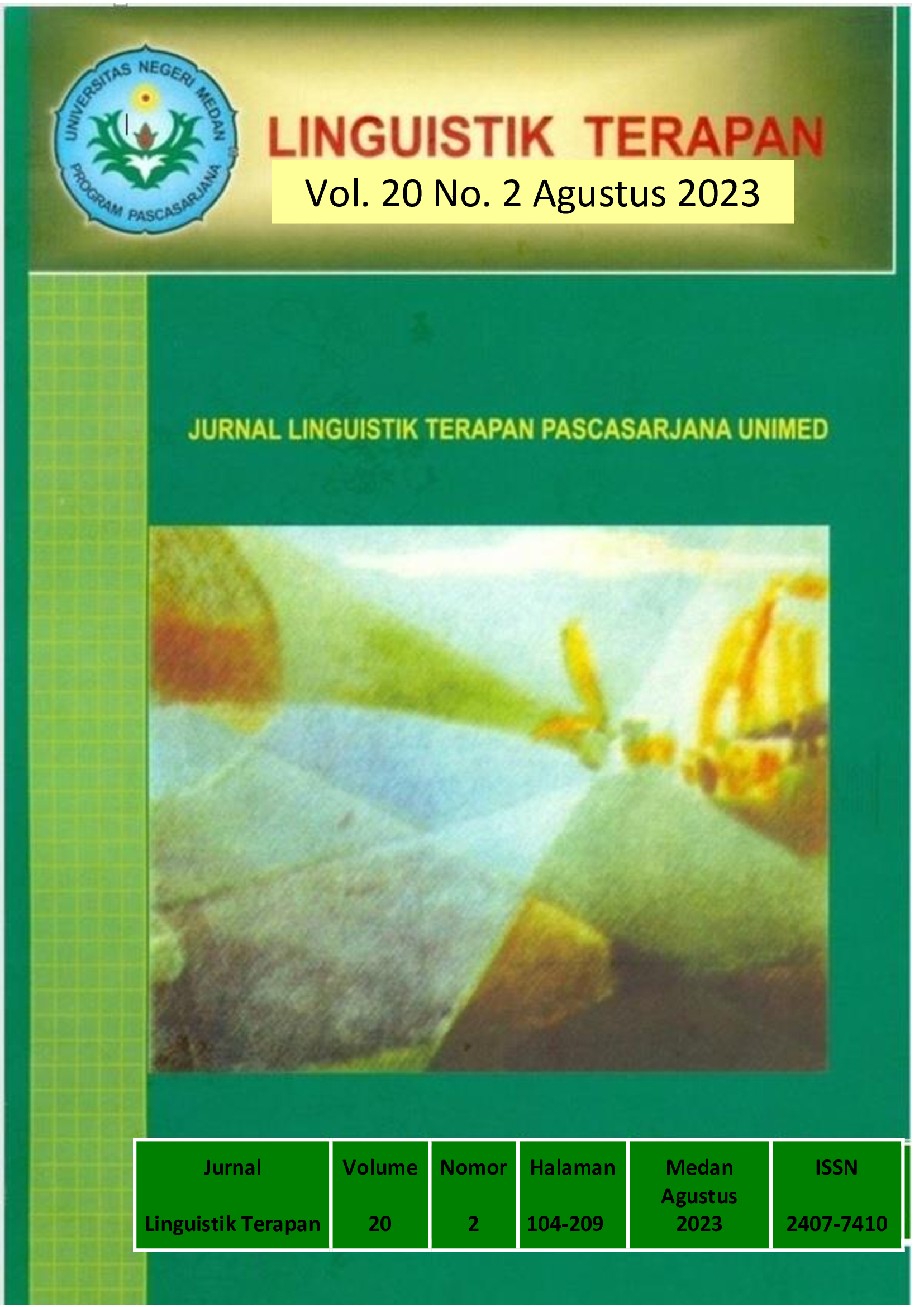POLITENESS AND IMPOLITENESS STRATEGIES OF LECTURER AND STUDENTS IN ENGLISH CLASSROOM INTERACTION
DOI:
https://doi.org/10.24114/lt.v20i2.52355Keywords:
Lecturer and Students, Classroom Interaction, Politeness and Impoliteness Strategy, ReasonsAbstract
This study was discussed about the reasons of politeness and impoliteness strategies used by lecturer and students in English education classroom interaction based on Brown & Levinson and Culpeper theory. This article was aimed to found the reasons why lecturer and students used politeness and impoliteness strategies in classroom interaction. This article used two theories in doing the analysis namely Brown & Levinson theory for the reason of using politeness strategies and Culpeper theory for the reason of using impoliteness strategies. This article applied descriptive qualitative method. The data of this research were the lecturer and students™ utterances in English education classroom interaction which taken from audio transcript and the result of interview the lecturer and representative of students. The results have revealed that there are five reasons why the lecturer used politeness strategies, namely speaker wants the hearer interpret what she means; to give the hearer chance to be perceived as caring person; to increase familiarity and friendship;to respect the hearer and to make the hearer understand directly, one reason why the students used politeness strategies namely to satisfy the hearer™s negative face and one reason why the students used impoliteness strategies namely to express negative feelings.References
Alakrash, H. M., & Bustan, E. S. (2020). Politeness Strategies Employed by Arab EFL and Malaysian ESL Students in Making Request. International Journal of Academic Research in Business and Social Sciences, 10 (6), 10-20.
Dagarin, M. (2004). Classroom Interaction and Communication Strategies in Learning English as a Foreign Language. ELOPE: English Language Overseas Perspectives and Enquiries, 1 (1-2), 127-139.
Miles, M. B., Huberman, A., M., & Saldaña, J. (2014). Qualitative Data Analysis: A Methods Sourcebook. Qualitative Data Analysis: A Methods Sourcebook.
Mugford, G. (2008). How Rude! Teaching Impoliteness in the Second-Language Classroom. ELT Journal, 62 (4), 375-384.
Panjaitan, S., & Ginting, S. A. (2021). Impoliteness Strategies Used by Students in English Online Learning through Zoom during Pandemic Covid-19. In 6th Annual International Seminar on Transformative Education and Educational Leadership (AISTEEL 2021) (pp. 480-483). Atlantis Press.
Sihombing, M. S. G., and Haswani, F. (2021). Politeness Strategies Used by English Teachers in Teaching Learning Process at Secondary School. Journal of Applied Linguistics of FBS Unimed, Vol. 10, No. 1.
Suhartono, S., Nurkamto, J., Sumarlam, S., & Marmanto, S. (2018). Politeness and Impoliteness in Directives: a Study on the Students-Lecturers Interaction. In International Seminar on Recent Language, Literature, and Local Cultural Studies (BASA 2018) (pp. 310-316). Atlantis Press.
Suwarni, A., & Bestari, A. (2021). The Students™ Talk on Politeness and Impoliteness Interaction in Classroom. In International Congress of Indonesian Linguistics Society (KIMLI 2021) (pp. 146-150). Atlantis Press.
Wicaksono, E. B., Wijayanto, A., & Zuhriyah, S. (2015). Impoliteness Used in Action Movies (Doctoral Dissertation-Universitas Muhammadiyah Surakarta).
Widana, I. M., Swandana, I. W., & Wedhanti, N. K. (2018). An Analysis of Politeness Strategies Used by Teacher and Students of X IBB in SMAN 1 Sukasada during English classroom interaction. Journal of Psychology and Instruction, 2(2), 77-83.
Downloads
Published
How to Cite
Issue
Section
License
Copyright (c) 2023 SENNYA . NURDITASARI, Masitowarni . Siregar, Winda Setiasari .

This work is licensed under a Creative Commons Attribution-ShareAlike 4.0 International License.






